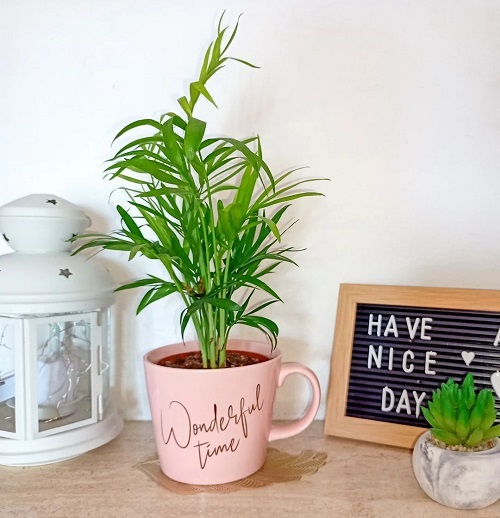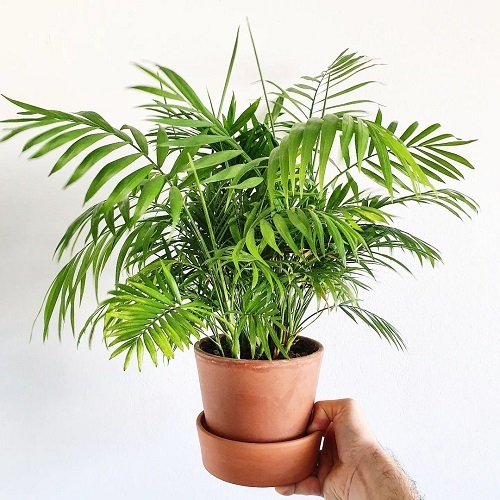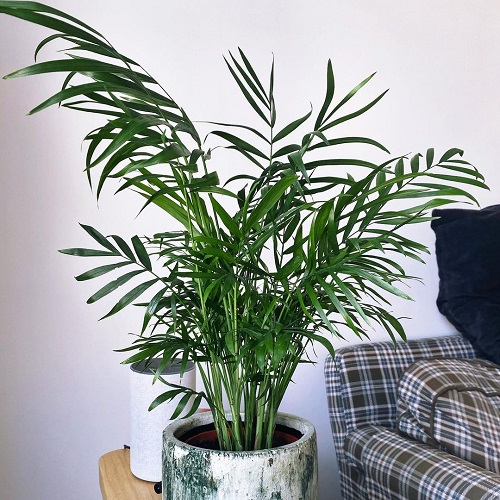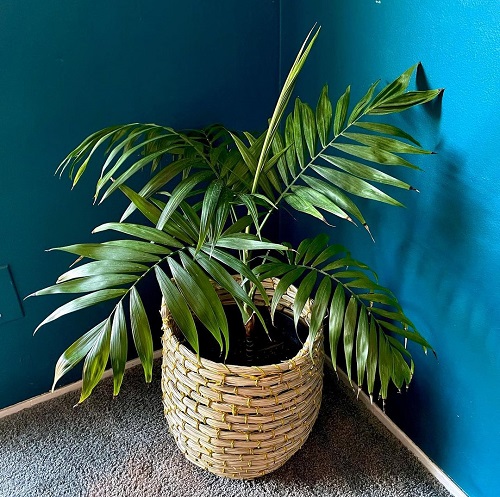Discover the essential Neanthe Bella Palm Care tips to keep this elegant houseplant thriving for a long time to come!

Neanthe Bella Palm is an evergreen specimen that stands out with its slender fronds. This guide will help you keep it healthy all year round!
Check out the Best Palm Trees in Florida here
Neanthe Bella Palm Information

The Neanthe Bella Palm, also known as the Parlor Palm or Chamaedorea elegans, is a popular indoor palm plant known for its elegant and compact appearance. Here is some information about the Neanthe Bella Palm:
It is native to the rainforests of Southern Mexico and Guatemala. It grows naturally in the understory of these tropical regions, where it thrives in shaded and moist environments.
The Neanthe Bella Palm is a small to medium-sized palm with a slender, graceful trunk. It typically reaches a height of 2 to 6 feet (0.6 to 1.8 meters) when grown indoors. The palm’s leaves are pinnate, meaning they have multiple leaflets arranged along a central stem. The leaflets are deep green, feathery, and arch gracefully, giving the plant its elegant appearance.
It is primarily grown as an indoor plant. It is favored for its ability to thrive in low-light conditions, making it suitable for areas with limited natural light. Neanthe Bella Palm is often used as a decorative accent in homes, offices, and other indoor spaces.
Read about How to Grow China Palm here
Propagating Neanthe Bella Palm
If you wish to attempt propagation at home, division is a simpler method to multiply your Neanthe Bella Palms, although success is not guaranteed. Here’s a step-by-step guide:
- Start with a healthy Neanthe Bella Palm that has multiple sturdy stems in its container.
- Choose a suitable-sized container and fill it with a soilless mix consisting of equal parts peat moss and either vermiculite or perlite.
- Carefully remove the mother plant from its container, gently loosening the potting soil to expose the bare roots.
- Look for a healthy stem with its own root structure. Use a clean, sharp blade to carefully cut away any roots connecting it to the main plant.
- Plant the fresh stem in the prepared container, ensuring that both the roots and stems are covered by the soil.
- Place the mother plant back in its original container, filling it with fresh soil.
- Water the plants thoroughly, moistening the potting soil. Keep both the parent and new plants in a warm, shaded location to aid in their recovery.
- Proceed to care for the plants as usual, providing appropriate watering and light conditions.
Check out the 10 Best Tabletop Palms here
Container Size for Neanthe Bella Palm
You can start Neanthe Bella Palm in an 8-10 inches pot, which will be good for a few years. Depending on the growth and spread, keep on re-potting it into one size bigger container than the old one.
Here are Plant Pot Sizes from Inches to Gallon
Requirements for Growing Neanthe Bella Palm

Location
The Neanthe Bella Palm thrives in bright, indirect light, although they can tolerate low light conditions for a limited time without becoming leggy.
Ideally, place them in a room with a north or west-facing window, providing medium to bright light. Avoid direct sunlight, as it can lead to leaf scorching.
Soil
Go for a high-quality, well-draining potting mix that is either peat-based or coco coir-based. These mixes provide good moisture retention while allowing excess water to drain away. Look for mixes specifically formulated for indoor plants or palms.
Add a handful of perlite or vermiculite to the potting mix. It improves drainage and increases the porosity of the soil, allowing for better aeration and root health of Neanthe Bella Palm.
Here are 9 Ways to Rejuvenate Old Potting Soil and Make it All Powerful Again
Also, incorporate a small amount of well-rotted compost or organic matter into the mix to provide additional nutrients.
Pro Tip: To ensure the Neanthe Bella Palm thrives, maintain a soil pH between 5.1 and 7.5.
Water
To maintain the health of Neanthe Bella Palm, it is important to strike a balance with watering. Avoid letting the soil become completely dry or overly saturated, as both conditions can cause the plant to wilt.
When watering, ensure thorough hydration, allowing water to drain from the bottom of the pot. Moisten the growing medium only when the topsoil feels a little dry to the touch.
Here are the best ways to water plants
Temperature and Humidity
The Parlor Palm prefers temperatures between 60°F and 80°F (15°C to 27°C). It thrives in average room temperatures found in most homes, making it well-suited as an indoor plant.
If the air in your home tends to be dry, you can increase humidity around Neanthe Bella Palm by using a humidifier or placing the pot on a tray filled with water and pebbles. Misting the leaves occasionally can also help provide some moisture.
Here are 10 Ways To Increase Humidity For Houseplants That Work
Neanthe Bella Palm Care

Fertilizer
Use a balanced, water-soluble fertilizer designed for indoor plants or palms. Look for a fertilizer with an NPK ratio of around 20-20-20 or similar.
Always dilute the fertilizer to half or a quarter strength of the recommended dosage on the fertilizer packaging. The Parlor Palm is sensitive to fertilizer concentration, and applying it at full strength can lead to fertilizer burn and damage to the plant.
During the growing season (spring and summer), fertilize the Parlor Palm once every 4-6 weeks. Reduce or stop fertilizing during the winter months when the plant’s growth slows down.
Here are Effective Homemade Lawn Fertilizers That Are Safe From Hazardous Chemicals
Pests and Diseases
The Neanthe Bella Palm is generally a resilient and hardy plant. However, it can still be susceptible to a few pests and diseases. One common issue is infestation by spider mites, which are tiny pests that can cause damage by sucking sap from the leaves.
Mealybugs can cause stunted growth and yellowing leaves. Scale insects can also be a problem, appearing as raised bumps on the leaves and stems. They can lead to leaf yellowing and the presence of a sticky residue.
Click here to learn the Amazing Natural Pesticide Recipe that can Kill any Pest
Additionally, maintaining good plant hygiene, such as cleaning the leaves regularly and avoiding overwatering, can help prevent infestations. The Neanthe Bella Palm is generally resilient, and with proper care and attention, it can recover from pest issues and continue to thrive.

